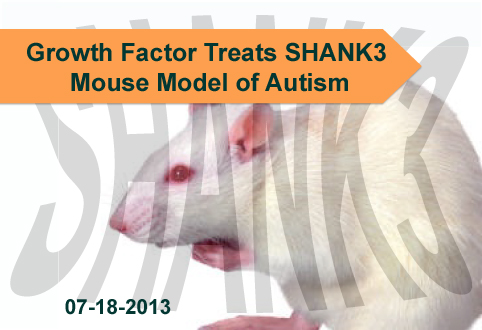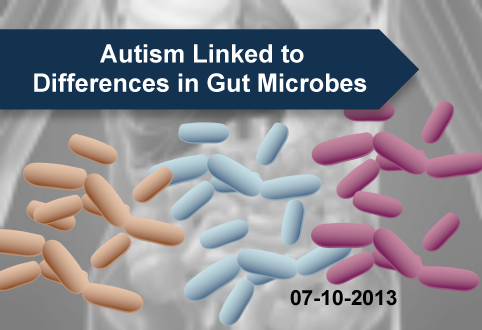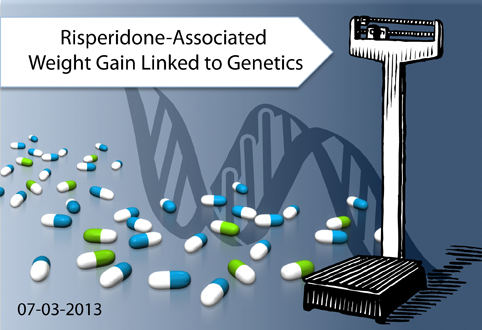Archives
July, 2013
Select a different month in the archive
Study Supports Role of Maternal Autoantibodies in ASD
By Shana R. Spindler, Ph.D. on July 25, 2013

Background: Over the past several years, researchers have presented correlation between the existence of autoantibodies in mothers and an increased diagnosis rate of Autism Spectrum Disorder (ASD) in their children. Autoantibodies are Y-shaped proteins of the immune system that bind one or more of the body’s own proteins. Researchers hypothesize that autoantibodies can pass through the developing blood-brain barrier of a fetus and inhibit the function of proteins important for brain development.
What’s new: Two back-to-back studies published on July 9, 2013, in the journal Translational Psychiatry provide compelling support for the hypothesis that maternal autoantibodies contribute to ASD risk. The first study examined which proteins of the body are targeted by the autoantibodies. The researchers reported that each of the target proteins identified has a known role in neuron development and/or function. Mothers with certain combinations of autoantibodies were more likely to have children with stereotypical ASD behaviors than mothers who did not carry those same autoantibody combinations.
In the second study, researchers tested the causative role of autoantibodies in ASD by injecting purified antibodies from mothers who have children with ASD (called IgG-ASD) into pregnant rhesus monkeys. As a control, researchers injected purified antibodies from mothers of typically developing children into a separate group of pregnant monkeys. The monkeys born to mothers injected with IgG-ASD had more difficulty forming reciprocal social interactions than did the monkeys born to mothers injected with control IgG. Upon further examination, the researchers found that male monkeys born to mothers injected with IgG-ASD had increased white matter volume in the frontal, occipital, and parietal lobes of the brain.
Why it’s important: These two studies are remarkable for three important reasons: First, the fact that specific combinations of maternal autoantibodies are predictive of an ASD diagnosis in children suggests that autoantibodies are a promising biomarker candidate for some cases of autism. Second, while many studies are only correlative, the experiment in pregnant rhesus monkeys suggests a causative mechanism in the link between mothers’ autoantibodies and ASD in their children. Third, pharmacological intervention to block autoantibody activity offers new therapeutic opportunities for maternal autoantibody-related autism.
Help me understand :
| Source(s) : |
| Tweet |
Mouse Model Supports IGF-1 Treatment Investigations
By Shana R. Spindler, Ph.D. on July 18, 2013

Background: Researchers have linked a small fraction of autism spectrum disorder (ASD) cases to mutations in SHANK3, a gene that codes for a scaffolding protein found at neural connections known as synapses. In mice, disruption of the Shank3 gene leads to neural signaling deficits, a decreased ability to alter synapses in response to experiences (a process known as long-term potentiation), and motor abnormalities.
A drug that can address synaptic disruption from SHANK3 mutations may be of benefit to a sub-population of people with ASD. Insulin like growth factor-1 (IGF-1), an approved drug for short stature in children, can enter the central nervous system to mediate synaptic development and activity and has shown promise in previous mouse and human studies of Rett syndrome.
What’s new: In a new study, researchers from the School of Medicine at Mount Sinai in New York, NY tested the effect of IGF-1 injections into a mouse model harboring an autism-linked disruption in one copy of the Shank3 gene. After daily injections for two weeks, mice showed improved neural signaling, restored long-term potentiation, and enhanced motor performance. This study was published April 27, 2013 in Molecular Autism.
Why it’s important: A double-blind clinical trial to study the safety and efficacy of IGF-1 treatment in children who have a SHANK3 gene deficiency and ASD is currently underway. Researchers do not fully understand how IGF-1 reverses the synaptic deficits observed with disruption of SHANK3.
Help me understand :
| Source(s) : |
| Tweet |
Autism Linked to Differences in Gut Microbes
By Chelsea E. Toledo, M.A. on July 10, 2013

Background: Inside the human gut, communities of benign microbes thrive, aiding in digestion. Studies have demonstrated that gastrointestinal (GI) issues often arise in people with autism spectrum disorder (ASD), but very few have examined how variability in so-called “good bacteria” in the gut might contribute to that trend.
What’s New: On July 3, 2013, the online journal PLOS ONE featured a study examining systematic changes in gut microbes as they related to ASD and accompanying GI problems. The researchers administered a survey to 40 children between the ages of three and 16 to assess symptoms of GI issues and ASD. They then took fecal DNA samples, which revealed that the children who had reported ASD symptoms had less diversity in their gut microbes than their typically developing counterparts, with significant and systematic reduction of certain carbohydrate-degrading and/or fermenting bacteria.
Why it’s important: This study demonstrated that the presence of ASD symptoms—as opposed to the symptoms of GI problems—was linked to specific irregularities in gut microbe composition. The finding could inform future research to diagnose and formulate dietary interventions for treating ASD.
Help me understand :
| Source(s) : |
| Tweet |
Risperidone-Associated Weight Gain Linked to Genetics
By Shana R. Spindler, Ph.D. and Chelsea E. Toledo, M.A. on July 3, 2013

Background: Risperidone is an atypical antipsychotic drug that acts by blocking the brain’s receptors for the chemicals serotonin and dopamine. While risperidone has been approved to treat schizophrenia and bipolar disorder since 1993, in 2006 the FDA deemed it an acceptable therapy for irritability in children and adolescents with autism spectrum disorders (ASD). Unfortunately, some patients experience antipsychotic-induced weight gain while using risperidone, but little is known about the variability of this symptom.
What’s New: A new study published 25 June 2013 in the journal Translational Psychiatry suggests that risperidone-induced weight gain is influenced by genetic factors. Researchers examined common genetic variations in “energy balancing” genes in 225 patients, aged 4-17 years. These patients belonged to the National Institute of Mental Health (NIMH) Research Units on Pediatric Psychopharmacology (RUPP) Autism Network trials of risperidone for the treatment of irritability in children and adolescents with ASD. Specific genetic variants affecting Cannabinoid Receptor-1 and Leptin, two proteins known to influence feeding behavior and weight, resulted in increased risk for weight gain with the use of risperidone.
Why it’s important: Adverse side effects from pharmaceutical treatments are of important concern. Understanding the genetic and environmental risk factors for side effects can help doctors develop more personalized treatments and improve clinical outcomes.
Help me understand :
| Source(s) : |
| Tweet |

